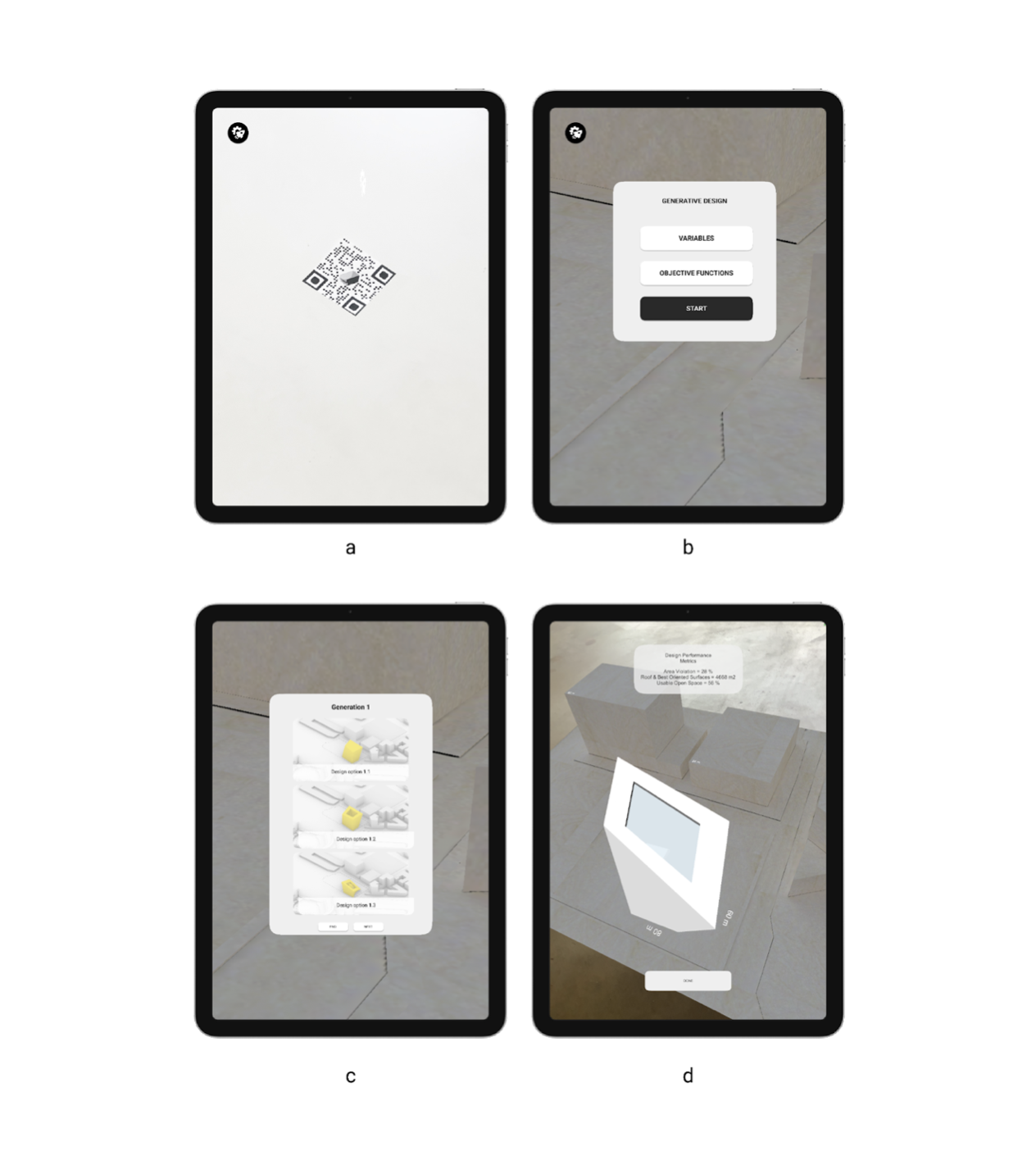Conference Grant Reports: Elnaz Bailey at the Generative AI Conference

Figure 1. The application overview; a. Using QR code to visualize the site as the first step; b. Starting the generative design process; c. the site and a visualized 3D design alternative from the generation; d. Overview of all designs in generation 1.
We are pleased to support our students in sharing their work at the premiere conferences in their field. Elnaz Bailey presented the paper “InsightXR: Operative Generative Design in Augmented Reality” at the GA2023, the 26th Generative Art Conference in Rome, Italy, on December 11th, 2023. Read more Below!
I presented the paper “InsightXR: Operative Generative Design in Augmented Reality” at the GA2023, the 26th Generative Art Conference in Rome, Italy, on December 11th, 2023. The focus of the GA2023 was Generative Artificial Intelligence. The conference included paper presentations as well as generative art exhibitions. I was able to participate in this conference with the help of BCNM’s conference grant.
I presented my research on generative design in architecture using augmented reality (AR). I introduced InsightXR, an AR platform that allows for the inclusive participation of users in the design process regardless of their physical location while exploring generative design as a method (Fig 1). The increased need for remote design and collaboration was the motivation behind the design of InsightXR. InsightXR enables users to visualize 3D designs through a generative design process in AR. InsightXR focuses on early-stage massing studies, which play a vital role in the architectural design process. Integrating immersive technology, such as augmented reality, into a user’s participation in the early-stage generative design process can help with immersion into the design and foster a better understanding of the project’s scale and overall geometry. This paper tried to answer the question: How can we propose a new method for design optimization in augmented reality (AR) to improve design participation in remote conditions?
I presented my findings on using generative design in AR and introduced a case study that was successfully generated using insightXR.
